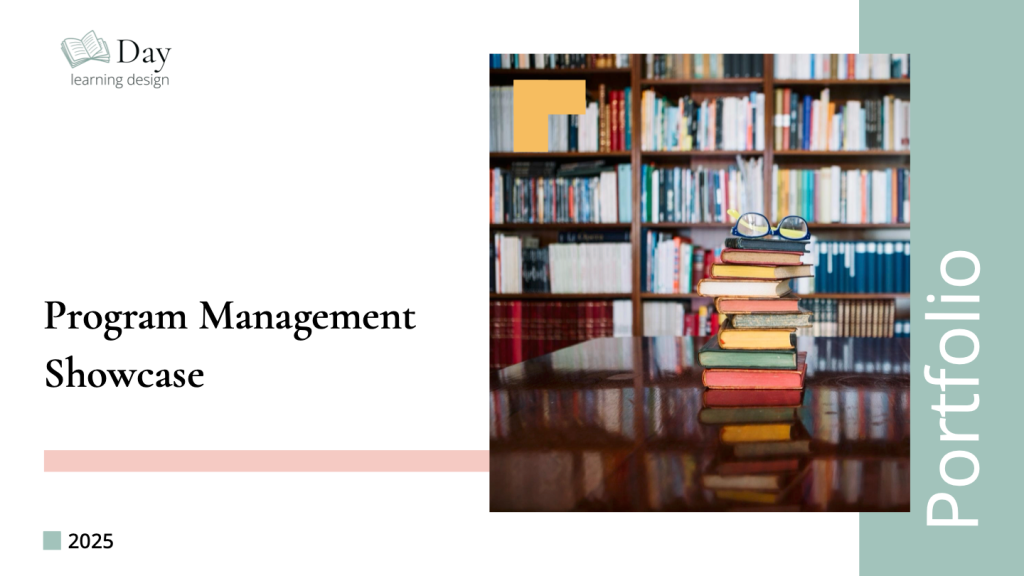Day Learning Design spearheads one-of-a-kind technical training for your product education programs.

Who am I?
I’m a PMP and L&D Program Manager at a global software company.

What do I do?
I manage and execute product training and credentialing programs in SaaS and B2B tech orgs.

Where is my work?
View work samples in my digital portfolio below to explore my design expertise and experience.
📑 Portfolio
Select the image below to view my work samples.

🌟 Testimonials

Sheldon E.
Sr. Manager Training & Development,
Capital Group
“[McKenzie’s] training project leads often asked for her by name to bring productivity and creativity to their projects. I never worried about putting her in front of any audience. “

Cathy D.
Lead Technical Instructional Designer,
CSG
“Her organizational skills and project management skills are invaluable, and the training courses she designs are polished, professional, and learner centered.”

Marlon D.
History Teacher,
Atlanta International School
“[McKenzie] is someone who worked hard to…revamp our curriculum to make it inclusive, anti-biased, and also student-centered, was an advocate for all minority groups in the school, and was someone who worked to create opportunities for growth and leadership within our group.”

